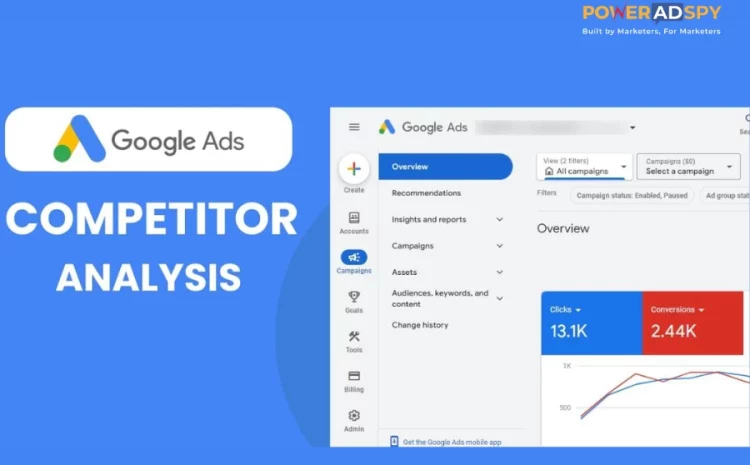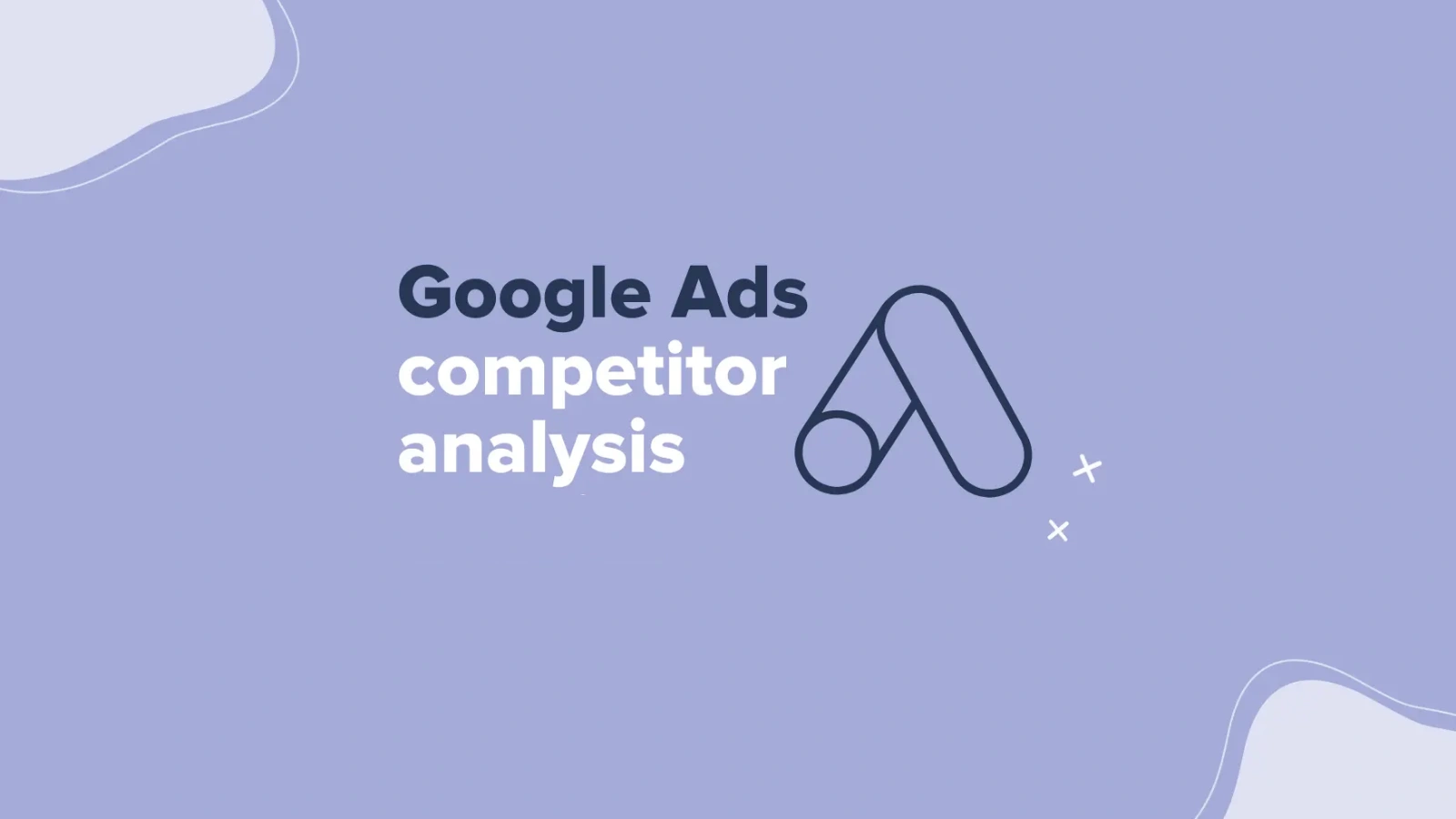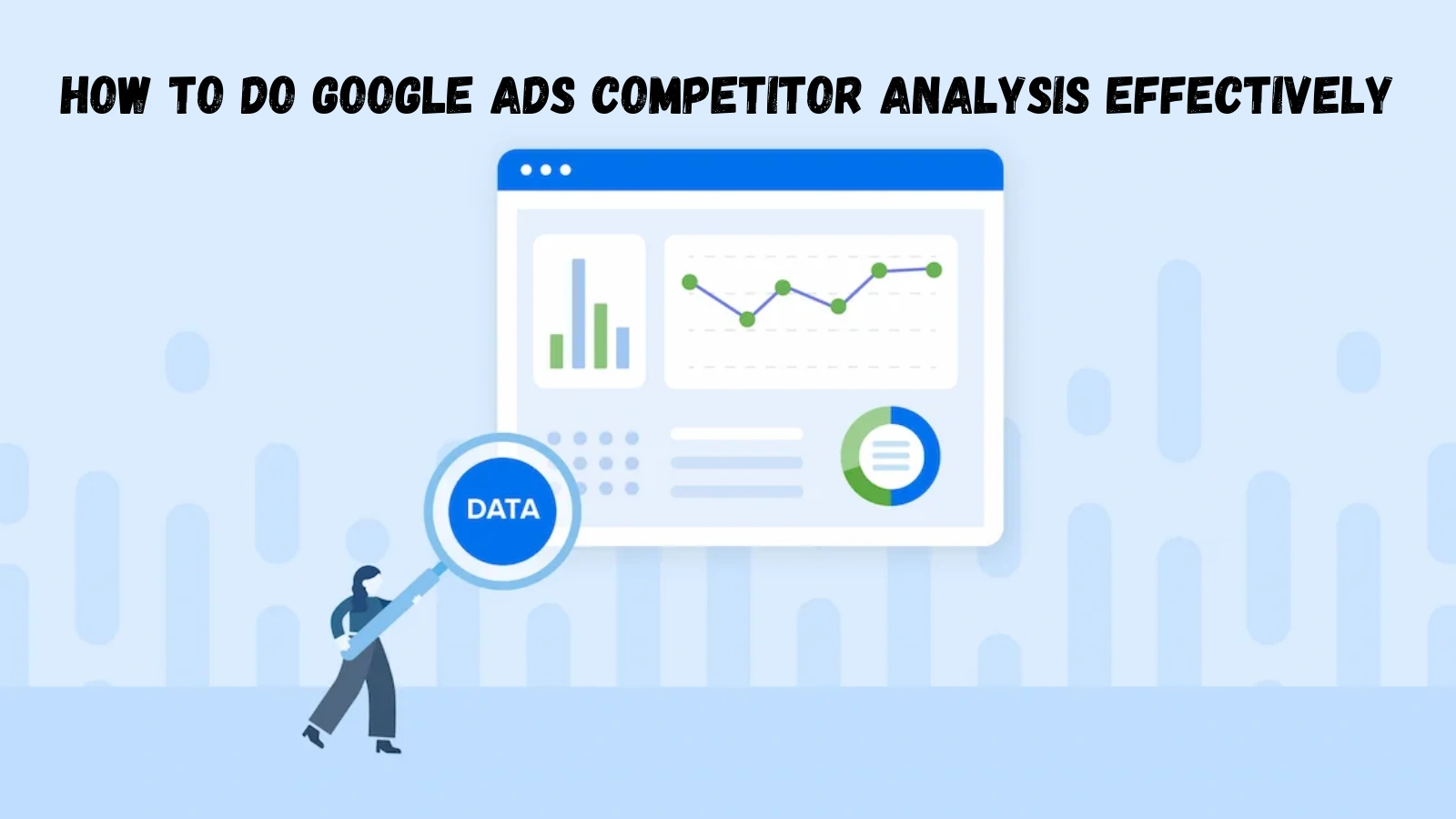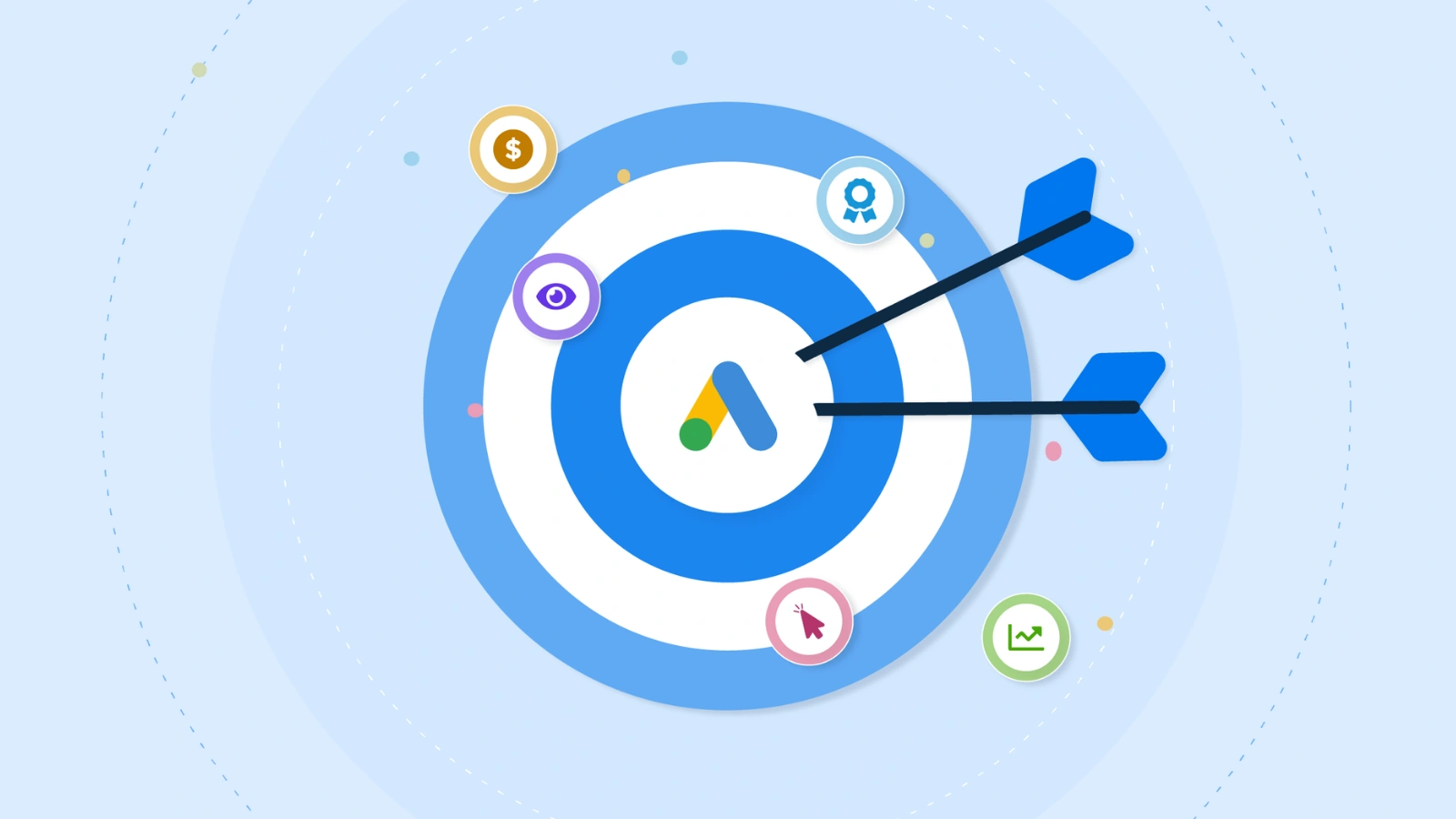How Powerful Is Your Google Ads Competitor Analysis?
In digital marketing, it’s not enough to have a great product or service; you need to make sure people see it. And when you’re competing for attention (and clicks), simply running Google Ads isn’t enough. If you’re not keeping an eye on what your competitors are doing, you could be missing out on valuable opportunities. This is where Google Ads competitor analysis makes a difference.
It helps you understand the landscape, spot what’s working for others, and use those insights to fine-tune your campaigns.
In this blog, we’ll break down exactly how to do it: how to uncover your rivals’ strategies, what to look for, and how to turn their moves into your next competitive advantage.
Listen To The Podcast Now!
What Is Google Ads Competitor Analysis?
Google Ads competitor analysis goes far beyond simply spying on your rivals; it’s about uncovering the strategic layers of their campaigns. From keyword choices and ad messaging to bidding styles and landing page structure, analyzing these elements reveals how competitors position themselves, attract clicks, and convert leads.
It allows you to identify opportunities they’re leveraging that you may have missed. Beyond surface-level observations, it also helps you understand the intent behind their strategies, whether they’re targeting awareness or purchase-ready users, promoting urgency, or building brand trust. These insights help you tailor smarter campaigns that don’t just match the competition, but rise above it, capturing more visibility, clicks, and conversions.
Why You Can’t Ignore Google Ads Competitor Analysis?
Here are some powerful reasons why Google Ads competitor analysis should be part of every advertiser’s strategy:
Uncover Valuable Keyword Opportunities:
By conducting competitor analysis in Google Ads, you can gain visibility into the high-performing keywords your competitors are bidding on, especially ones you may have missed. This allows you to uncover low-competition or untapped keyword gaps that drive more qualified traffic cost-effectively.
Refine and Strengthen Ad Messaging:
By studying how competitors communicate, tone, offers, CTAs, and emotional triggers, you can fine-tune your ad copy to better connect with your audience, stand out from the crowd, and boost click-through rates.
Optimize Budget Allocation With Confidence:
Rather than relying on assumptions, Google AdWords competitor analysis reveals where your industry rivals are focusing their spend. This insight helps you allocate your budget more wisely, investing in the keywords, formats, and audiences that are already showing strong ROI for others.
Outperform Rivals in Click-Through Rate (CTR):
Use competitive data to create ads that outperform others in your niche. Whether it’s by offering better incentives, writing more compelling headlines, or using overlooked ad extensions, your CTR can rise by simply doing what your competitors aren’t.
How To Do Google Ads Competitor Analysis Effectively?
Let’s break down the practical steps for conducting an actionable Google Ads competitor analysis:
Step 1: Identify Your Top Competitors
Start by searching your target keywords on Google and note the businesses that appear frequently. These are your real ad competitors, those bidding for the same audience’s attention. Make a list of at least five for focused analysis.
Step 2: Analyze Keywords Used by Competitors
Study which keywords your competitors are targeting by observing their ads and placements. Look for high-intent keywords, keyword variations, and seasonal patterns. This helps refine your targeting strategy for better visibility and relevance.
Step 3: Evaluate Competitor Ad Copy
Review the headlines, descriptions, and CTAs used in competitor ads. Focus on their messaging style, value propositions, and tone, whether emotional or factual. Use these insights to craft unique, attention-grabbing ads of your own.
Step 4: Inspect Landing Pages
Visit the landing pages linked in their ads and assess layout, content flow, and conversion elements. Check how they guide visitors to take action. A well-structured and persuasive page can give them an edge, so use this to your advantage.
Step 5: Use Google’s Auction Insights
This feature shows how often your ads compete with theirs, who outranks you, and where your ads appear on the page. It’s a smart way to monitor ad visibility, spot strong rivals, and adjust your bids or strategy accordingly.
Step 6: Check Ad Extensions Usage
Notice which ad extensions your competitors are using, like extra links, promotions, or call options. These enhance ad visibility and CTR. If they’re using more extensions than you, it’s time to optimize yours for better performance.
Also Read:
Google Ads Competitor Analysis: A Comprehensive Guide
Tips To Simplify Google Ads Competitor Analysis
To conduct Google Ads competitor analysis effectively, you need smart tools that offer insights into what others in your space are doing. These tools help uncover keyword strategies, ad messaging styles, bidding behavior, budget trends, and ad formats, all in one place.
Here are some of the ways using which you can elevate your competitive analysis for Google ads:
Keyword and Ad Intelligence Tools:
These tools allow you to discover which keywords your competitors are targeting, how frequently their ads appear, and the messaging patterns they use. With access to historical ad data, you can spot trends and keyword gaps worth exploring.
Auction Insights and Performance Trackers:
Tools in this category provide visibility into how your campaigns stack up against competitors. They show impression shares, average positions, overlap rates, and top-of-page performance so you can assess visibility and competitive pressure.
Creative and Copy Monitoring Platforms:
Understanding how your competitors craft headlines, descriptions, and CTAs gives you a creative edge. These platforms help you analyze ad structure, copy tone, and visual strategy to inspire and improve your creatives.
Landing Page Review and Funnel Analysis Tools:
A competitor’s ad is only half the story; the post-click experience matters too. These tools let you examine landing page design, conversion flow, and load performance to identify UX advantages and optimization opportunities.
One solution that stands out in this space is PowerAdSpy. Although known for social ad insights, PowerAdSpy brings immense value to Google Ads competitor analysis by helping marketers uncover high-performing ad creatives, track engagement patterns, and understand targeting strategies with precision.
Its rich ad database and filtering capabilities make it an ideal tool to explore how others in your niche position their campaigns, what resonates with audiences, and how you can craft more compelling ads of your own.
How PowerAdSpy Enhances Your Google Ads Competitor Analysis?
PowerAdSpy goes beyond surface-level ad tracking. It gives advertisers full control and clarity to study, save, and learn from top-performing ads in any niche. Here’s how it aligns with your Google Ads competitor analysis goals:
Search Ads Using Keywords, Domains, and Advertisers:
PowerAdSpy enables detailed filtering to search ads based on specific keywords, competitor domains, or advertiser names. You can instantly view what others are promoting and how they’re structuring their campaigns.
Access to Millions of Ads Across 100+ Countries:
Its extensive and fast-growing ad database spans over 100 countries. This makes it easy to discover high-converting ad ideas from various regions and uncover global advertising trends.
Smart Filtering and Segmentation:
You can sort ads by position (e.g., feed vs sidebar), call-to-action type, or engagement metrics. This helps you find top-performing ads that align with your goals, whether it’s increasing clicks, conversions, or user interaction.
Live Ad Visibility and Real-Time Engagement:
PowerAdSpy allows direct access to live ad posts, letting you view actual engagement, likes, comments, and shares, so you can determine which ads are genuinely resonating with the target audience.
Bookmark Ads to Build Your Creative Vault:
Save standout ads to your library for future reference. This is especially useful when planning new campaigns, as you’ll always have high-performing ad examples ready for inspiration.
Target Audience Insights and Geo-Focus:
With built-in geo-targeting intelligence, you can identify where your competitors are focusing their campaigns geographically. This allows you to identify untapped or overlooked markets.
Image + Video Ad Research:
Analyze both image-based and video creatives that are currently trending in your niche. You can even download video creatives for reference, making it easier to plan multimedia campaigns that align with market demand.
Engagement-Driven Data:
Beyond just impressions and clicks, PowerAdSpy emphasizes real engagement. This allows you to see which ads create buzz and community interaction, helping you craft content with similar appeal.
Incorporating PowerAdSpy into your Google Ads competitor analysis strategy can significantly sharpen your campaign planning. With its deep data access, smart filtering, and creative inspiration tools, you’re better equipped to identify what works, adapt faster, and outperform the competition.
Which Google Ads Competitor Metrics Should You Focus On?
When conducting Google Ads competitor research, it’s not just about gathering data; it’s about interpreting it strategically. Concentrate on metrics that provide practical, data-driven insights.
- Estimated Ad Spend reveals how aggressively your competitors are investing.
- CTR (Click-Through Rate) shows which ads are resonating with the audience.
- Ad Frequency and Freshness help you gauge how often they refresh creatives.
- Ad Positioning (top vs. bottom) reflects bid strength and visibility.
- Keyword Overlap helps spot missed keyword opportunities.
- Landing Page Bounce Rate indicates whether users are engaging or bouncing off.
Together, these metrics help uncover gaps in your competitors’ strategies that you can turn into your biggest advantage.
These insights reveal your competitors’ weaknesses, your biggest opportunity.
Also Read:
7 Google Ads Competitors Analysis Tools For Better Ad Research
Top Google Ads Competitors Analysis Secrets You Must Know
Common Mistakes In Google Ads Competitor Analysis
Avoid these common missteps to ensure your research efforts drive smarter, more effective campaigns:
Blindly Copying Competitors:
Duplicating a competitor’s ads or keywords without context can backfire. What performs well for them might not align with your audience, pricing, or brand voice. Always adapt insights to your unique goals and positioning.
Ignoring Keyword Intent:
Not all keywords are created equal. Just because a competitor ranks for a term doesn’t mean it drives high-converting traffic. Analyze the intent behind keywords, whether informational, navigational, or transactional, before incorporating them.
Analyzing a Single Competitor Only:
Limiting your analysis to just one player narrows your vision. Study a mix of top-ranking and rising competitors to uncover diverse strategies, ad styles, and keyword variations you might otherwise miss.
Overlooking Mobile Ad Experience:
Competitor ads may display and behave differently on mobile vs. desktop. Failing to examine the mobile journey, from ad click to landing page, can lead to missed opportunities or poor mobile performance in your own campaigns.
By avoiding these mistakes, you ensure your Google Ads competitor analysis leads to actionable insights, not just surface-level observations.
How To Build A Winning Strategy With Competitor Insights?
Once you’ve gathered competitive data, use it to shape a high-performing Google Ads strategy. Here’s how to make those insights count:
Enhance Ad Rank with Smarter Optimization:
Focus on improving ad quality score by aligning your ad copy with search intent, creating fast-loading, mobile-friendly landing pages, and ensuring message continuity from ad to site. Higher ad relevance often means lower CPCs and better positioning.
Strategize Bids Based on Data, Not Assumptions:
Rather than blindly matching competitor bids, analyze which keywords are truly driving value. Invest more in long-tail, low-competition terms that your competitors aren’t fully targeting; they often bring better conversion at a lower cost.
Split-Test Using Competitor-Inspired Variations:
If competitors are using specific tones, formats, or CTAs successfully, run A/B or A/B/C tests to compare their approach against yours. Add your creativity to see what resonates better with your audience.
Uncover and Target Keyword Gaps:
Competitors often overlook profitable keywords. Use insights to find underutilized or high-intent keywords they’ve missed and build ad groups around them to capture unclaimed traffic.
Offer More Compelling, Differentiated Promotions:
Instead of mimicking bland offers like 10% off, craft irresistible deals with unique value, such as time-sensitive bundles, exclusive bonuses, or emotional incentives, that make users pick your ad over theirs.
By turning your Google Ads competitor analysis into clear strategic actions, you gain not just visibility, but the ability to outperform your rivals consistently.
Conclusion
Success with Google Ads doesn’t come from guesswork; it’s built on data, observation, and smart adaptation. By actively studying your competitors, you’re not just watching from the sidelines; you’re learning what drives clicks, conversions, and brand engagement in your industry. Whether it’s decoding their ad copy, analyzing their keyword strategy, or understanding their landing page flow, every insight is a stepping stone to sharper, more cost-effective campaigns.
One powerful way to turn those insights into action is by using PowerAdSpy, a leading Google Ads spy tool. It equips you with real-time data, creative benchmarks, and precise targeting analytics that help you not just compete, but lead, with confidence.
Remember, digital advertising is a moving target. The only way to stay ahead is to keep testing, keep refining, and keep watching what the competition is doing, so you can do it better.
FAQs
1. How often should I perform Google Ads competitor analysis?
Ans. You should conduct a thorough competitor analysis at least once a month and perform smaller, campaign-specific reviews during major ad changes, promotions, or seasonal shifts. This ensures your strategy stays relevant and competitive.
2. Can Google Ads competitor analysis help reduce my CPC?
Ans. Yes. By identifying high-performing, low-competition keywords and optimizing ad copy and extensions based on competitor gaps, you can improve your quality score and ad relevance, often leading to a lower cost-per-click (CPC).
3. Is it possible to analyze competitors running Google Display Ads?
Ans. Absolutely. While search ads are more obvious, several tools allow you to analyze display creatives, targeting methods, and placements. Observing your competitors’ display ads helps you understand their branding and retargeting efforts.












